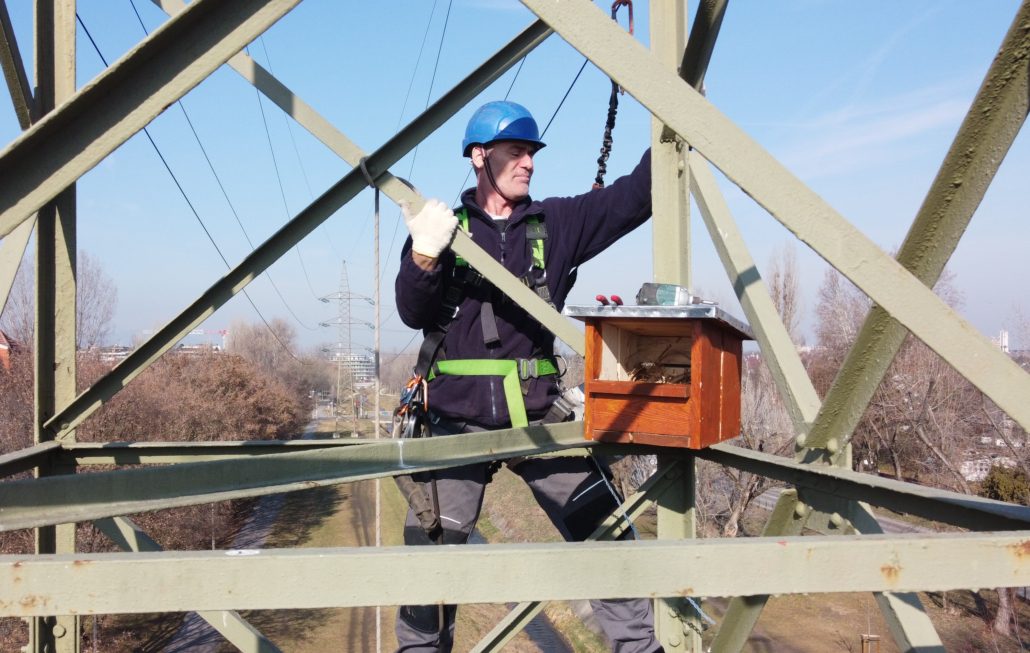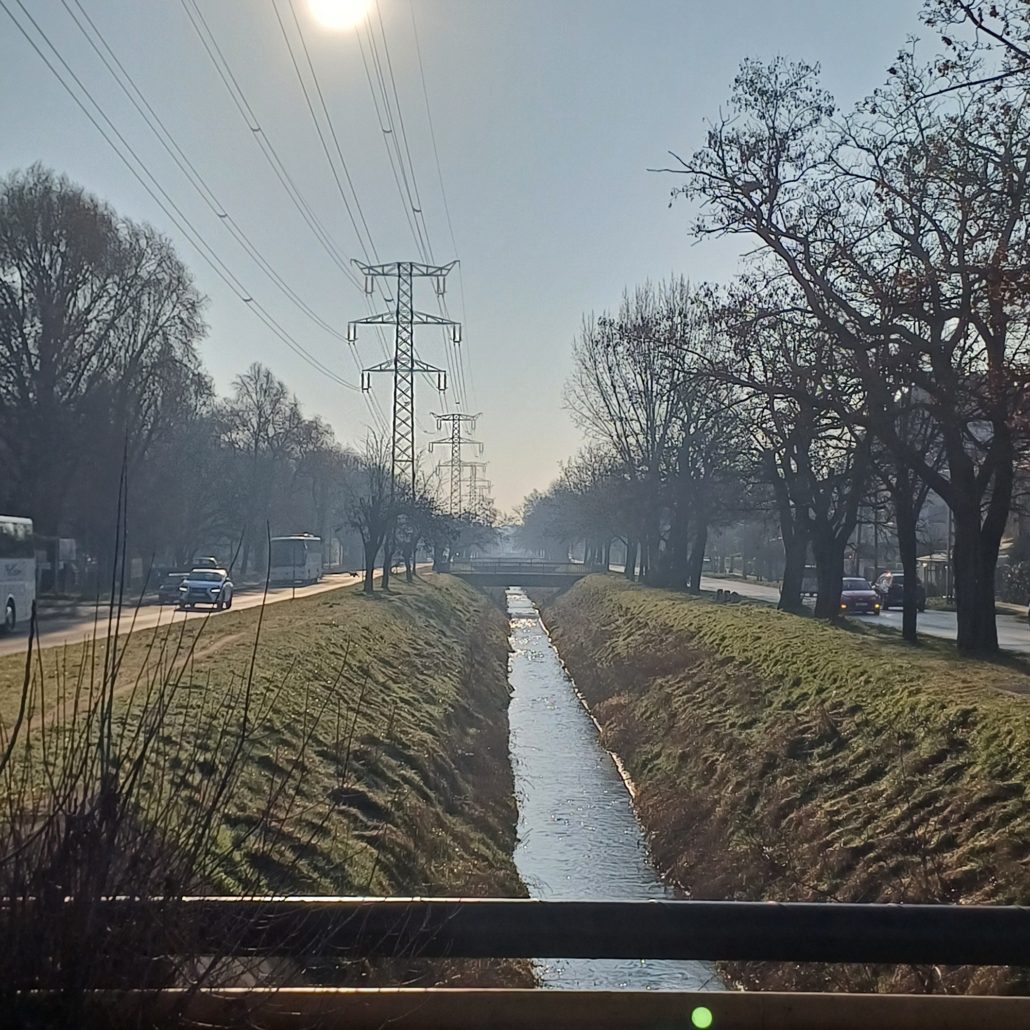E.ON installs kestrel boxes on the banks of Rákos stream
- Red kestrel nesting boxes have been placed on E.ON Hungária Group’s high-voltage pylons in the Zugló district of Budapest.
- The nest installations were done by a specialist from the Hungarian Ornithological and Nature Conservation Society according to Zugló’s request.
- More than 170 artificial nesting boxes host birds of prey on E.ON’s network in Pest County, Budapest and Transdanubia.
E.ON Hungária Group has placed red kestrel nesting boxes on pylons along the Rákos stream. The 132 kV high-voltage network’s pylons along the stream are suitable for nesting, according to Hungarian Ornithological and Nature Conservation Society recommendations. The installations also provide a safe breeding site for red kestrels, free from human disturbance and other predators. The wild and tended areas of the stream’s banks are an excellent place for the kestrels to find food such as voles, lizards and grasshoppers.

These shelter areas for birds are made of wood, are waterproof, and are protected from the sun by an aluminium cover. E.ON mounted them at a height of 6 metres on the high-voltage poles. The condition of the nests, their occupancy and the development of the nestlings inside will be monitored by volunteer experts from the Hungarian Ornithological and Nature Conservation Society.

The red kestrel is a common bird in the capital, breeding in tall buildings, fixed windows, gaps in buildings, and occasionally occupies the nests of other birds, such as crows and magpies. It nests in a number of streets in Zugló, and breeding pairs are known to inhabit the roofs of Budapest’s Geological Museum and Hungary’s Parliament building.
Last year, E.ON measured an 80 per cent occupancy rate for these artificial nest boxes on high-voltage power poles. So far this year, the electricity company has provided more than 170 artificial nests for birds of prey, and plans to install more throughout the year.




